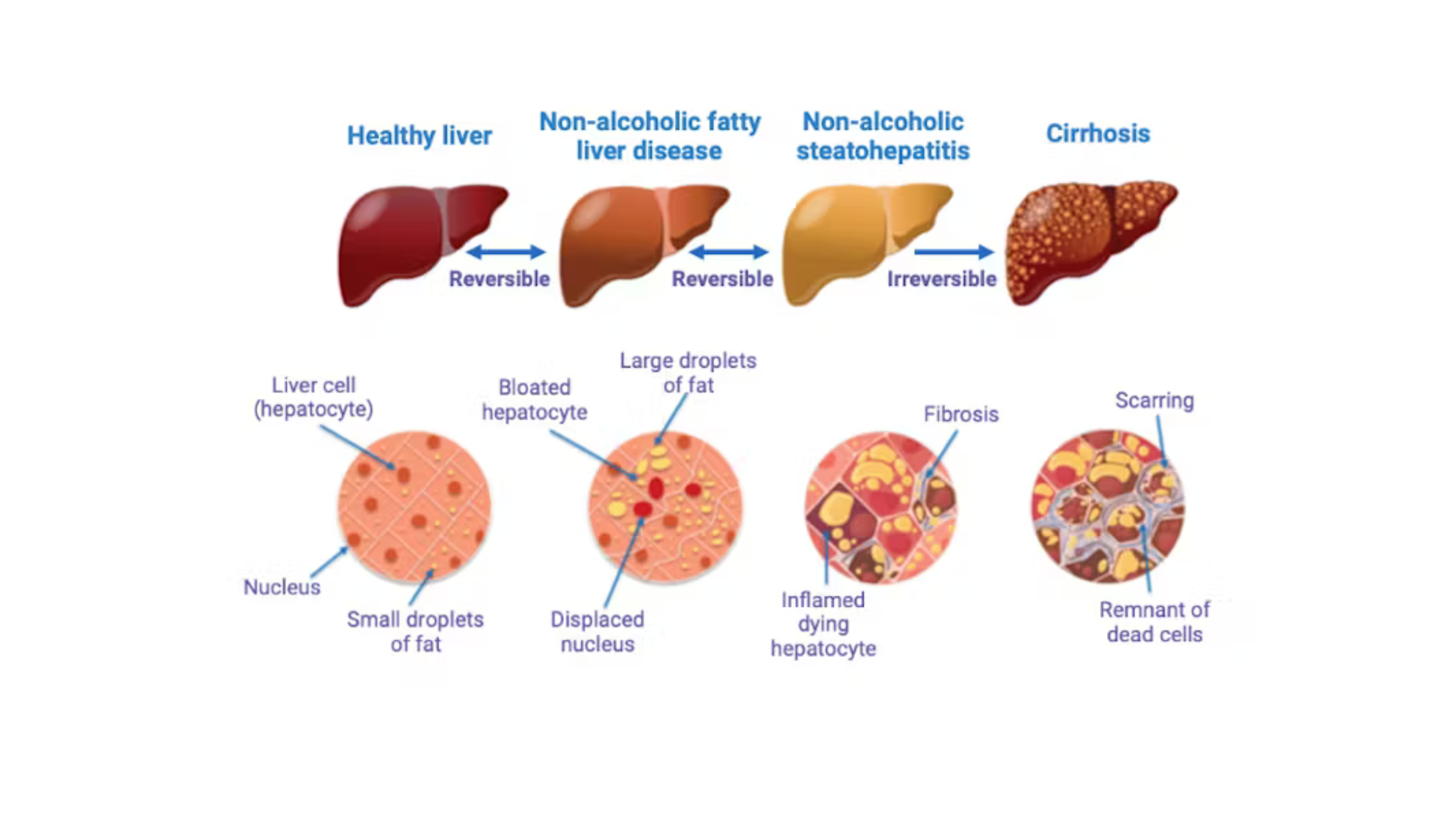Fatty Liver: The Leading Chronic Liver Disease in Our Country
Fatty liver, clinically referred to as hepatic steatosis, is characterized by the accumulation of fat in the liver exceeding normal levels. It is classified into two main types based on etiology:

1. Non-alcoholic Fatty Liver Disease (NAFLD): This form is unrelated to alcohol consumption and is commonly associated with metabolic syndrome conditions such as obesity, diabetes, and hyperlipidemia.
2. Alcoholic Fatty Liver Disease: This type is caused by chronic excessive alcohol intake.
Health Burden Among Young People
Fatty liver disease has emerged as the predominant chronic liver condition in our country, with a notable prevalence among the younger population. Statistics indicate an increasing health burden of hepatic steatosis and liver fibrosis in this age group, influenced by the following factors:
Unhealthy Lifestyle: Factors such as late-night habits, excessive alcohol consumption, and diets high in sugars and fats contribute to hepatic fat accumulation, leading to fatty liver.
Metabolic Syndrome: The prevalence of obesity, diabetes, and dyslipidemia among young people exacerbates liver stress and heightens the risk of developing fatty liver and fibrosis.
Health Risks: If left unmanaged, fatty liver can progress to nonalcoholic steatohepatitis (NASH), cirrhosis, and potentially liver cancer. Liver fibrosis impairs liver function and significantly affects quality of life.

Key Characteristics
Symptoms: Early-stage symptoms are often asymptomatic but may include fatigue and abdominal discomfort.
Risks: Without intervention, fatty liver may advance to steatohepatitis, cirrhosis, or hepatocellular carcinoma.
Diagnosis: Diagnosis is typically made through physical examination, blood tests, and imaging techniques (such as abdominal ultrasound).
Preventive Measures
Dietary Adjustments: Reduce intake of high-fat and high-sugar foods and increase consumption of fresh fruits, vegetables, and whole grains.
Physical Activity: Engage in at least 150 minutes of moderate-intensity exercise per week, including activities like brisk walking, running, or swimming, to support liver health.
Regular Sleep: Avoid late nights and ensure adequate sleep.
Routine Check-ups: Regular liver function tests and abdominal ultrasounds are recommended for early detection and intervention.
Alcohol Moderation: Limit or avoid alcohol consumption entirely.
Adopting a healthy diet, regular exercise, and routine health monitoring can effectively mitigate the risk of fatty liver and its associated complications. Prioritizing liver health now will contribute to a healthier lifestyle.
Related Immunoassays
- Cardiac Markers
-
Tumor Marker
-
PGII
-
G17
- CA50
-
CA125
- CA242
-
CA15-3
- CA19-9
- CA72-4
-
Pepsinogens I (PGI)
-
Human Epididymis 4 (HE4)
- Prostate-Specific Antigen (PSA)
- Squamous Cell Carcinoma (SCC)
- Neuron-Specific Enolase (NSE)
- Cytokeratin 19 Fragment (CYFRA21-1)
- Human Progastrin-releasing Peptide (ProGRP Tumor Marker)
- Protein Induced by Vitamin K Absence or Antagonist-II (PIVKA II Tumor Marker)
- Alpha-fetoprotein(AFP)
-
CEA
-
Human Chitinase 3-like 1
-
PGII
- Inflammatory Marker
- Infectious Disease
- Hormones
- Thyroid Function
- Glucose Metabolism
- Bone Marker
- Others
-
Heterophilic Blocking Reagent
- Animal Diagnostics

















